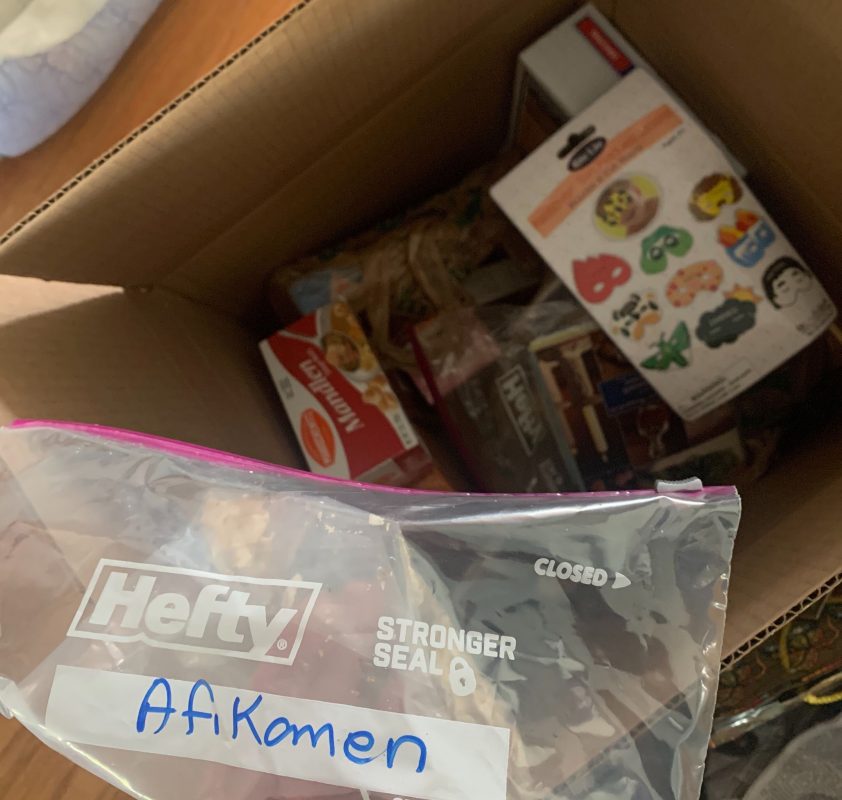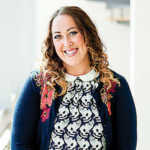
This past weekend we did a Zoom run-through with my dad, teaching him how to “share his screen” for the 14 guests tuning in tomorrow night for the first night of Passover.
“Poppy’s Passover PowerPoint Presentation” came through loud and clear. (Now mind you this presentation existed pre-pandemic, but it’s never been shown via a remote conferencing app.)
If you don’t know, Passover is a pretty major Jewish holiday. It commemorates the emancipation of the Israelites from slavery in ancient Egypt. As the story goes: The Israelites left Egypt in such haste, they could not wait for their bread dough to rise; hence matzo.
Every year we gather over two nights for our Seder, which highlights four cups of wine, matzo, bitter herbs, gefilte fish, matzo ball soup, brisket and potato kugel. But the biggest highlight is the friends and family stuffed around the table (not quite Unorthodox level, but close.)
At the Passover Seder every year we ask the Four Questions, including: “Why is tonight different from all other nights?” This year, where do we even begin?
But as we’ve learned throughout the last few weeks (generations), you adapt. The other day a delivery showed up at my door—an accompaniment to the PowerPoint.
It was quickly dubbed “Passover In a Box.” My parents had filled the huge package with matzo, a Haggadah (the text recited at the Seder), fruit flavored jelly slices (love or hate them), Afikomen—pieces broken off from matzo during a Seder and hidden for the kids to find—and plague masks. You know your typical “hail,” “boils,” “darkness,” and “frogs” disguises to be worn while the 10 plagues—a pivotal part of the Seder—are recited.
This year will certainly be different. So I turned to Rabbi Jessy Dressin, director of national social action organization Repair the World Baltimore. Dressin has put together a “Zeder” (that’s a Zoom Seder) for her own family that she has graciously shared with us.
“I’m going to start by being honest,” says Dressin, adding that missing in-person Passover this year with her brand new baby nephew hurts. “I really felt a deep sadness and loss,” she explains. Her 15-page Zeder was a consolation prize.
“I still wanted to do something for my family,” says Dressin. But as a well-known community rabbi, in so many circles, she wanted to do something for the masses, too. People kept asking her. “What are you doing? No really, what are you doing.”
A silver lining in this is the “generational torch that nobody expected to be passed this year,” says Dressin. The—let’s be honest—young guest who usually shows up with the bottle of horseradish or a kosher-for-Passover dessert to Bubbe’s is suddenly taking over as the Nachshon—the Seder leader. The keeper of the Zoom now holds the power.
The connection between the holiday and the global pandemic is not lost on Dressin. There was angst and uncertainty and “layers upon layers of challenges,” she says—referring to the story of Passover.
“There were plagues happening all around them, sickness and hardship and barriers,” she says. “They were constantly worrying, ‘How long is this going to be?’”
Sounds familiar. But, of course, Dressin brings it back to hope, faith, and rituals. (She’s a rabbi after all.) “I’m seeing people look for comfort in sources of tradition,” she says. That means, have the Seder.
For Dressin, it also means cooking her paternal grandmother’s chicken soup and maternal grandmother’s potato kugel—even if it’s just for Dressin and her husband. Those smells are “all part of the three-dimensional experience of Passover that’s being forced into a two-dimensional point of connection.”
But Dressin says that’s good enough—dayenu—and people need to hear that from their rabbi. “Good enough is okay.”
Above all, Dressin’s Zeder leans into the pandemic while still embracing the customs of Passover. “Yes, the space between us is scary. It is odd and at odds, an area unoccupied where all things exist,” it reads. “But the space between us is also liminal, a threshold between old and new. And so, in this space anything is possible: to grow without gathering, to connect without congregating, and to create without convening.”
